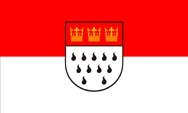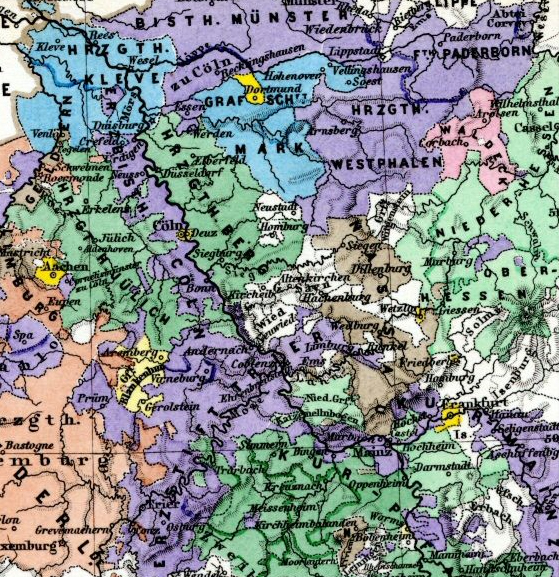mobile View, to the German Version tap the flag
![]()








Ancient · settlement by Germanic tribes (Eburones, Aduatuci, Ubii and Guberner)
58–51 B.C. · The area was conquered by Roman troops, to the province of Germania Inferior, to an Ubii settlement on the Rhine was given the Latin name Oppidum Ubiorum (lace of the Ubii Tribe)
50 A.D. · Oppidum Ubiorum receives its town charter by the Empress Agrippina, the wife of Emperor Claudius, to honor her, the town was a little later renamed to "Colonia Claudia Ara Agrippinensium" (short: Colonia Agrippina, later Cologne)
2nd century · Diocese of Cologne (the seat of a bishop)
253 · invasions of the Franks and Ripuarians
395 · at the division of the Roman Empire the Cologne area came to the West Roman Empire
455 · conquest by the Franks
481 · the region comes to the Frankish Empire
785 · Cologne becomes archdiocese (also called archbishopric, the seat of an archbishop, a first diocese of the Catholic church in a province of the archbishop resides)
953 · Otto the Great gives the city and the archbishopric of Cologne and the Duchy of Lorraine to his brother Brun as partially worldly possessions. The archbishopric becomes in this way in addition a local secular authority
13th century · the Archbishops of Cologne become electors (for the royal election legitimated prince)
1794 · invasion of the French revolutionary army, the archbishopric loses its independence
1801 · the Archbishopric and Electorate becomes dissolved, all the left-bank territories ceded to France and incorporated by this
1803 · German Mediatisation (Reichsdeputationshauptschluss), the right-bank areas become divided between the Duchies of Nassau and Hesse-Darmstadt, and the County of Wied-Runkel
1806 · end of the Holy Roman Empire of German Nation
1815 · Congress of Vienna, nearly all the territories of the former Archbishopric of Cologne come to Prussia, to the province of Jülich-Kleve-Berg (from 1822 Rhine Province) or to the Province of Westfalia
1821 · restoration of the archbishopric of as purely sacral administrative region
1947 · the state of Prussia becomes eliminated by the Allies, the Rhineland and Westfalia become connected to the newly created States of North Rhine-Westfalia and Rhineland-Palatinate
Sources:
Wikipedia (D),
Atlas zur Geschichte,
Discovery '97
![]()